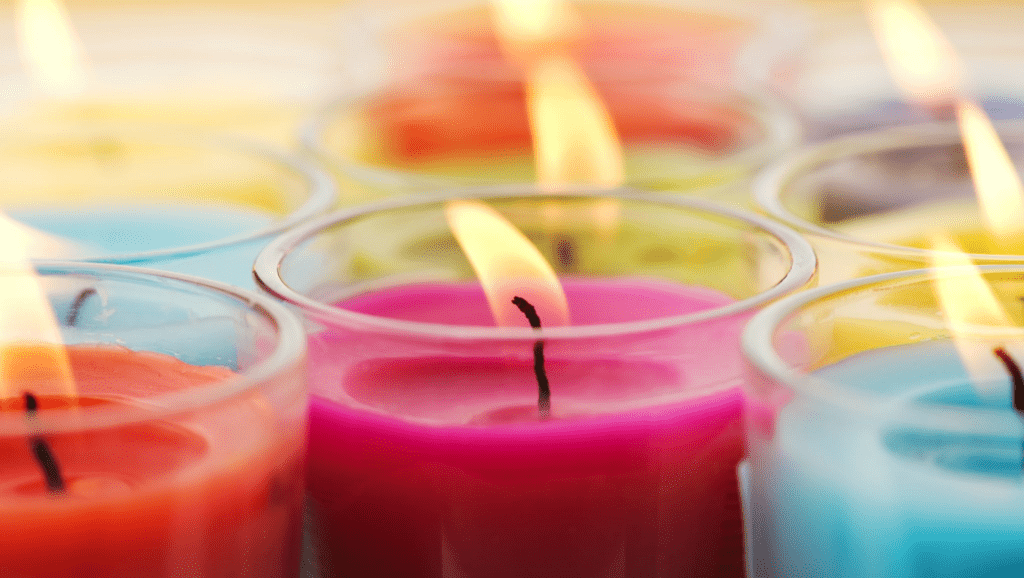
A Comprehensive Guide to Candle Wax: Types, Benefits, and How to Choose the Perfect Wax for Your Needs
Candle wax comes in various types, each with its own unique characteristics, benefits, and drawbacks. Understanding the different types of candle wax can help you make informed decisions when choosing candles for various purposes.
As an avid candle maker, I’ve become quite accustomed to the types of waxes, and which ones I prefer working with depending on the project at hand. Here, I’ll go over the types of candle wax options available to you and which ones to use, especially if you are a beginner candle maker and just starting your candle making journey and/or hobby.
Paraffin Wax

- Overview: The most widely used candle wax derived from petroleum.
- Benefits: Affordable, versatile, excellent fragrance throw, and long burn time.
- Drawbacks: Potential soot emissions and sensitivity to fumes for some individuals.
- Ideal for: Everyday use, budget-friendly candles, and fragrance enthusiasts.
Paraffin wax is the most widely used candle wax and is derived from petroleum. It is known for its affordability, versatility, and excellent fragrance throw. This is my go-to wax I use for most jar and container-type candle projects. Paraffin candles produce a bright flame and have a relatively long burn time. However, they may emit some soot when burned, and some individuals may be sensitive to the fumes.
Soy Wax

- Overview: Made from soybean oil, a renewable and sustainable option.
- Benefits: Clean burn, minimal soot, long burn time, and excellent fragrance retention.
- Drawbacks: Soft consistency prone to melting in warmer conditions.
- Ideal for: Environmentally conscious consumers, those with sensitivities, and aromatherapy candles.
Soy wax is made from soybean oil and is a popular alternative to paraffin wax due to its renewable and eco-friendly nature. Soy candles burn cleaner, produce less soot, and have a longer burn time than paraffin candles. They also have excellent fragrance retention. However, soy wax tends to have a softer consistency, which can result in candles that are more prone to melting in warmer conditions.
Beeswax

- Overview: Naturally derived wax produced by bees.
- Benefits: Beautiful golden color, pleasant honey scent, clean burn, long burn time, and air-purifying properties.
- Drawbacks: Higher cost compared to other waxes.
- Ideal for: Special occasions, meditation spaces, and those seeking a natural and luxurious option.
Beeswax is a natural wax produced by bees and is considered one of the oldest types of candle wax. It is known for its beautiful golden color, pleasant honey scent, and clean-burning properties. Beeswax candles produce a bright, warm flame and emit negative ions that help purify the air. They have a long burn time and do not drip as much as other types of wax. However, beeswax candles tend to be more expensive than other options.
Palm Wax

- Overview: Derived from palm oil, with a distinctive crystalline appearance.
- Benefits: Sustainable option (if sourced responsibly), excellent scent throw, clean burn, and long burn time.
- Drawbacks: Environmental concerns associated with unsustainable palm oil cultivation.
- Ideal for: Decorative candles, unique designs, and those supporting sustainable palm oil production.
Palm wax is derived from palm oil and is a renewable and sustainable option. It has a unique crystalline appearance and provides excellent scent throw. Palm wax candles burn cleanly and have a long burn time. However, the cultivation of palm oil can contribute to deforestation and habitat destruction, so it’s important to choose sustainably sourced palm wax if you opt for this type.
Coconut Wax

- Overview: Natural wax made from coconut oil.
- Benefits: Creamy texture, clean burn, long burn time, and good fragrance retention.
- Drawbacks: Higher cost compared to other waxes.
- Ideal for: High-quality candles, luxury home fragrance, and those seeking a unique wax option.
Coconut wax is a natural wax made from the oil of coconuts. It is known for its creamy texture, excellent scent throw, and clean burn. Coconut wax candles have a long burn time and good fragrance retention. They are often blended with other waxes to enhance their performance. However, pure coconut wax can be more expensive compared to other options.
Gel Wax

- Overview: Transparent, rubbery wax suitable for embedding objects.
- Benefits: Allows for creative designs, slow burn, and steady flame.
- Drawbacks: Limited scent throw, higher melting point, and can be challenging to work with.
- Ideal for: Decorative or themed candles, personalized gifts, and creative projects.
Gel wax is a transparent, rubbery wax that allows for creative designs and embeds within the candles. It is often used to create decorative or themed candles. Gel candles burn slowly and produce a bright, steady flame. However, they may have limited scent throw and can be more challenging to work with due to their higher melting point.
When choosing the right candle wax, consider the following factors:
- Purpose: Determine the intended use of the candle, whether it’s for ambiance, relaxation, or decoration.
- Fragrance: Some waxes hold fragrances better than others, so consider the desired scent intensity and longevity.
- Environmental Impact: If sustainability is a priority, opt for renewable and eco-friendly waxes like soy, beeswax, or sustainably sourced palm wax.
- Budget: Different waxes vary in price, so consider your budget when selecting a candle wax type.
If you’re looking for a reputable company to buy quality candle wax, check out Nature’s Garden Candle Co.
Whether you opt for the affordability of paraffin wax, the eco-friendliness of soy wax, or the natural beauty of beeswax, each type has its own benefits and drawbacks. Explore the possibilities, experiment with different waxes, and create memorable experiences with the perfect candles for your needs.



